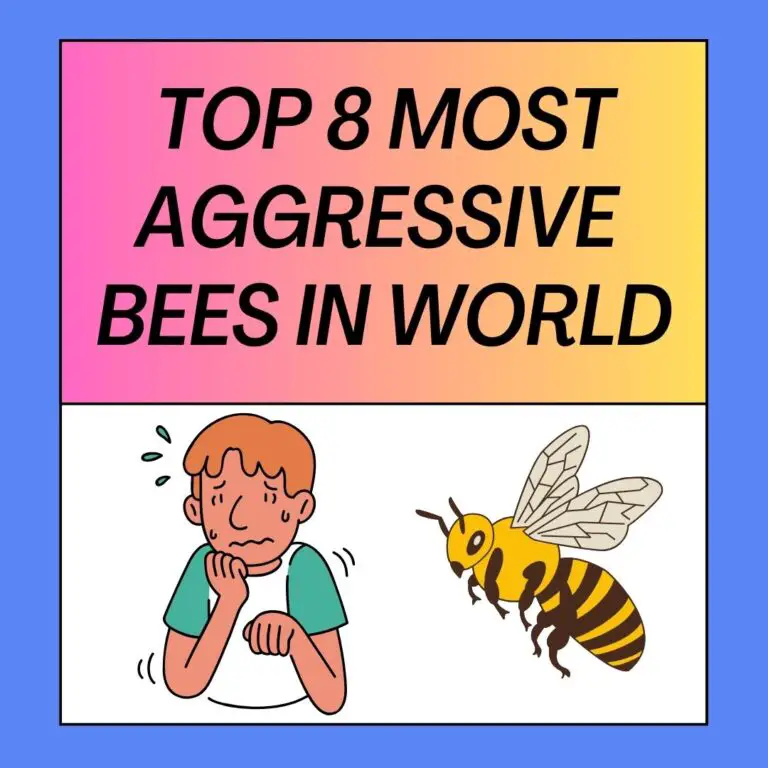
The process of bees killing their queen, known as “supersedure,” typically occurs when the queen bee’s performance or health is subpar. Worker bees will identify her as unsuitable for her role, and a replacement is necessary for the colony’s survival.
The process of Replacing a queen bee
- Identifying the Problem: Worker bees within the colony assess the queen’s performance. This includes evaluating her egg-laying capabilities, pheromone production, and overall health. If she’s not meeting the colony’s needs, worker bees begin preparations for supersedure.
- Raising a New Queen: Worker bees select a few young larvae, usually less than three days old, and feed them a special diet called “royal jelly.” This diet triggers the development of potential queen bees. The first larva to emerge as an adult queen will usually become the new queen.
- Eliminating the Old Queen: Once the new queen is ready to emerge, the worker bees may form a cluster around the old queen, preventing her from moving. They do not sting her but block her access to food, effectively starving her. Alternatively, they may create physical barriers within the hive to isolate her from the rest of the colony.
- The Emergence of the New Queen: The new queen emerges from her cell and quickly establishes her dominance within the colony. She will go on mating flights to mate with drones, ensuring a genetically diverse population.
- The Old Queen’s Fate: The old queen, unable to feed herself or maintain her health, weakens and eventually dies. Her death allows the colony to fully accept the new queen as the sole egg-laying individual.
The Queen Bee: Her Birth, Life, and Death
The queen bee is a vital member of the colony, responsible for laying eggs and producing pheromones that maintain colony cohesion. Her life can be divided into several stages:
- Birth: The queen bee begins life as an egg laid in a larger, specially constructed cell within the hive. She’s fed royal jelly throughout her larval stage, which triggers her development into a potential queen.
- Pupal Stage: During this stage, the future queen forms her adult body and develops reproductive organs.
- Emerge as an Adult: Once her development is complete, the new queen chews her way out of her cell. She then seeks out and eliminates other potential rival queens in the hive.
- Mating Flights: The young queen embarks on mating flights, during which she mates with several drones (male bees). She stores their sperm in a special organ called a spermatheca to use for fertilizing eggs throughout her life.
- Egg-Laying: After mating, the queen returns to the hive and begins laying eggs. She can lay up to 2,000 eggs a day, ensuring the colony’s population growth.
- Pheromone Production: The queen produces pheromones that regulate the behavior and cohesion of the colony. These pheromones suppress the development of potential rival queens and keep worker bees focused on their tasks.
- End of Life: The queen’s egg-laying capacity gradually declines with age, leading to a decline in pheromone production. Worker bees may then initiate supersedure, as mentioned earlier, and the old queen’s life comes to an end.
What Causes Bees to Kill Their Queen?
Several factors can trigger worker bees to kill their queen:
- Poor Performance: If the queen is not laying enough eggs or her pheromone production is inadequate, the colony may perceive her as unfit for her role.
- Age: As the queen ages, her egg-laying capacity declines. When this happens, worker bees may decide to replace her with a younger, more productive queen.
- Disease or Injury: If the queen becomes sick or injured and cannot perform her duties, the colony may opt for supersedure to ensure its survival.
- Genetic Diversity: Colonies benefit from genetic diversity, and if the queen’s mating was insufficient or resulted in a genetically less diverse population, worker bees may replace her.
How Do Bees React When the Queen Dies?
When a queen dies, it’s typically a critical situation for the colony. Worker bees may initially exhibit confusion and agitation. However, they quickly assess the situation and respond in one of the following ways:
- Emergency Queen Cells: Worker bees may start constructing emergency queen cells if they have the appropriate-aged larvae available. These cells can be used to raise a new queen if necessary.
- Temporary Queenlessness: In some cases, the colony may temporarily function without a queen while worker bees work to raise a new one. During this time, the worker bees may lay unfertilized eggs, which develop into drones (male bees) rather than worker bees or queens.
- Absconding: In extreme cases, when a colony loses its queen and is unable to raise a replacement quickly, it may abscond, which means the entire colony leaves the hive and searches for a new location.
Summary
The life of a queen bee is marked by distinct stages, from her birth as an egg to her emergence as an adult and subsequent egg-laying duties. The queen’s role is central to the colony’s success, as she is responsible for laying eggs and producing pheromones that maintain order and cohesion among the worker bees.
There are various reasons why bees may kill their queen, including poor performance, age-related decline, disease, injury, or genetic factors. Bees prioritize the survival and effectiveness of the colony, and supersedure is a strategy they employ to achieve these goals.
When a queen bee dies or is killed, the colony responds swiftly to ensure its continuity. Worker bees may raise a new queen from selected larvae, temporarily function without a queen, or, in extreme cases, abandon the hive in search of a new home.
Bees’ ability to adapt to changes in their queen’s status is a testament to their complex social structure and remarkable instincts. Their survival depends on maintaining a healthy and productive queen, making supersedure a critical process in the life of a bee colony.
In the intricate world of bees, the role of the queen bee, her replacement when necessary, and the survival of the colony as a whole are a testament to the remarkable and highly organized nature of these essential pollinators.
Related FAQ about Queen Bee’s Death
Why Do Bees Reject a Queen?
Bees reject a queen for various reasons, mainly related to her inability to meet the colony’s needs. These include insufficient egg-laying, inadequate pheromone production, disease, injury, or age-related decline.
Can Bees Kill a Queen in a Cage?
Yes, worker bees can kill a queen if she is introduced into the hive in a cage. The worker bees will assess her and, if they find her unsuitable, they may attempt to sting her through the cage bars. This behavior can occur if the introduced queen has a different scent or the colony is not ready to accept a new queen.
Is It OK to Kill a Queen Bee?
Killing a queen bee is a natural process in bee colonies, especially when the queen’s performance or health is compromised. Worker bees make these decisions based on the colony’s survival and reproductive needs.
Can Bees Survive Without a Queen?
Bees can survive temporarily without a queen, but the colony’s long-term survival depends on raising a new queen. During a queenless period, worker bees may lay unfertilized eggs, resulting in the development of drones, but they cannot sustain the colony’s egg-laying needs.
What Is the Easiest Way to Kill a Queen Bee?
The easiest way to kill a queen bee is by preventing her from accessing food and isolating her from the rest of the colony. Worker bees can achieve this by clustering around her and forming a physical barrier.
Do Bees Kick Out the Queen?
Worker bees do not physically kick out the queen, but they may isolate her within the hive or prevent her from laying eggs by restricting her access to cells.
Are Bees Attracted to a Queen?
Yes, worker bees are attracted to the queen due to her pheromones. The queen’s pheromones regulate the behavior and cohesion of the colony, and worker bees constantly seek her presence.
Do Queen Bees Hurt More?
Queen bees do possess stingers, but they are less likely to use them compared to worker bees. The primary function of a queen bee is egg-laying and pheromone production, not defense. When a queen bee stings, her stinger is not barbed like that of worker bees, so she can sting multiple times without dying.
Do Bees Know Their Queen?
Yes, worker bees recognize and respond to their queen through her pheromones. The queen’s pheromones maintain order and harmony within the colony, and worker bees are highly attuned to them.
Can a Bee Become a Queen?
Under specific circumstances, worker bees can develop into queens. This typically occurs when the colony loses its queen, and worker bees select a larva to raise as a replacement queen by feeding it royal jelly. This larva undergoes physical changes that enable it to become a fertile queen rather than a sterile worker bee.






